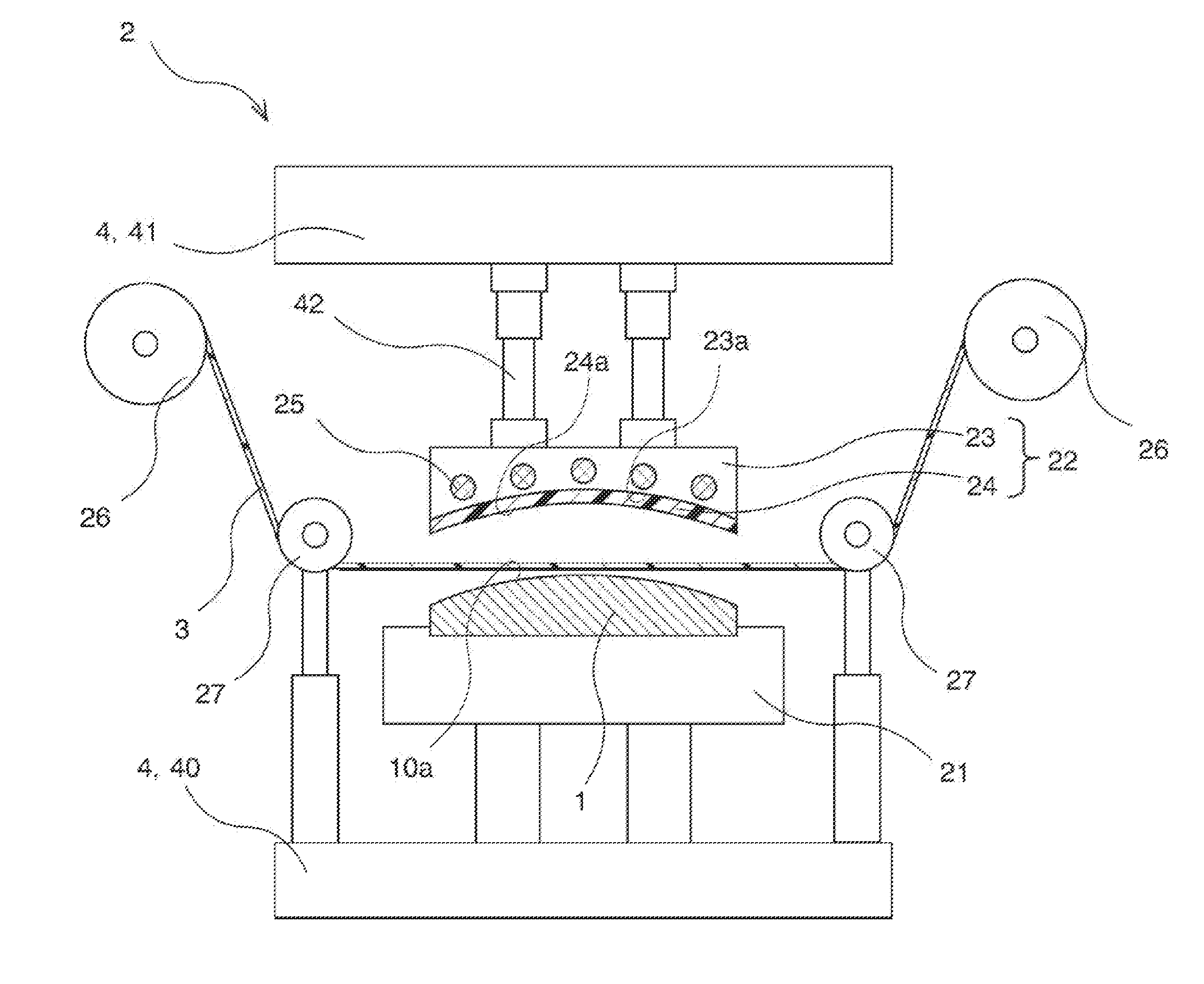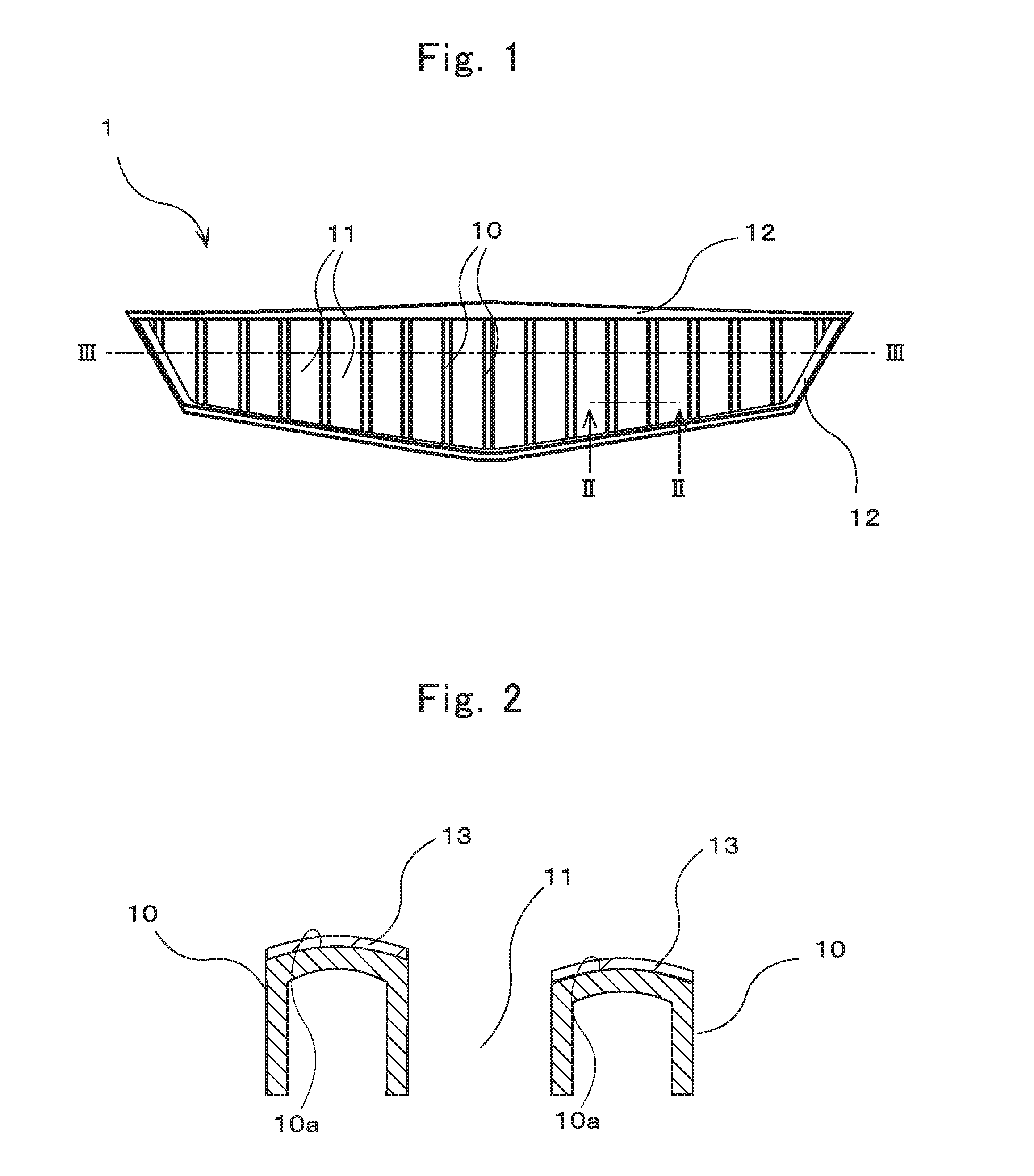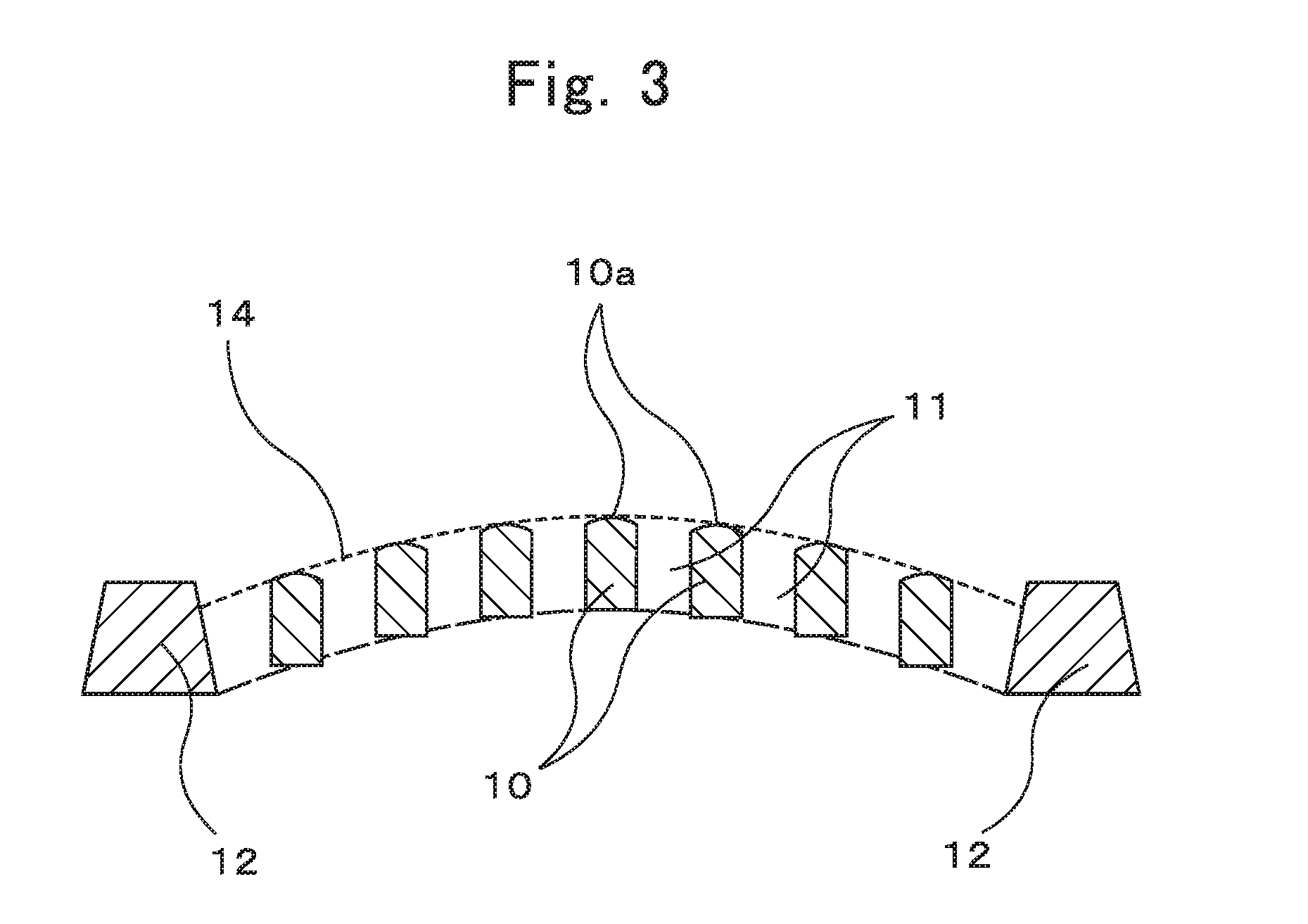Method of manufacturing decorative molding
- Summary
- Abstract
- Description
- Claims
- Application Information
AI Technical Summary
Benefits of technology
Problems solved by technology
Method used
Image
Examples
embodiment
Radiator Grille 1
[0040]As illustrated in the front view in FIG. 1, the radiator grille 1 spreads in a vehicle width direction (in the lateral direction in FIG. 1) in shape. The grille 1 includes ridges 10 extending in a direction perpendicular to the vehicle width direction (in the vertical direction in FIG. 1) and arranged side by side in the vehicle width direction with gaps 11 therebetween. The grille 1 includes a perimeter portion 12 on the perimeter of the area in which the ridges 10 and the gaps 11 are placed. Each ridge 10 has ends in its extending direction, which are integrated with the perimeter portion 12.
[0041]As illustrated in the sectional view in FIG. 2, each ridge 10 has a tapered and substantially inverted-U-shaped section having a projecting curved end surface 10a. FIG. 2 is a section along the line II-II in FIG. 1. In the embodiment, hot stamping is employed to thermal transfer a transfer sheet to the end surface 10a of each ridge 10 in the grille 1 to form a deco...
PUM
| Property | Measurement | Unit |
|---|---|---|
| Length | aaaaa | aaaaa |
| Angle | aaaaa | aaaaa |
| Length | aaaaa | aaaaa |
Abstract
Description
Claims
Application Information
 Login to View More
Login to View More - R&D Engineer
- R&D Manager
- IP Professional
- Industry Leading Data Capabilities
- Powerful AI technology
- Patent DNA Extraction
Browse by: Latest US Patents, China's latest patents, Technical Efficacy Thesaurus, Application Domain, Technology Topic, Popular Technical Reports.
© 2024 PatSnap. All rights reserved.Legal|Privacy policy|Modern Slavery Act Transparency Statement|Sitemap|About US| Contact US: help@patsnap.com










